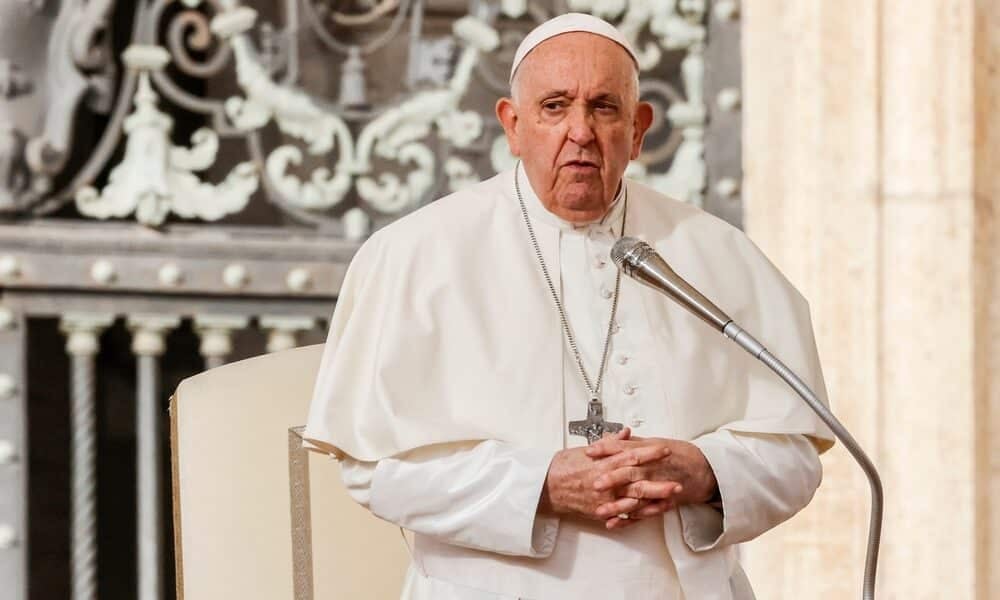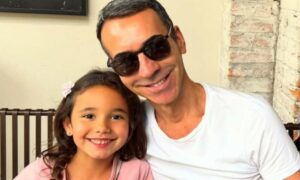Pope Francis, 88, has been hospitalized at the Gemelli Hospital in Rome since February 14, 2025, due to bilateral pneumonia and a polymicrobial respiratory infection. The Vatican has released new medical bulletins, stating that the pontiff’s clinical condition remains complex, requiring continuous monitoring and adjustments to his medication. The infection developed in the context of bronchiectasis and asthmatic bronchitis, making treatment more challenging. Since his hospitalization, Francis has received intensive care and undergoes frequent tests to monitor his progress. Despite the severity of his condition, he remains in good spirits and continues light activities such as reading and prayers. The Holy See has announced that, due to the need for absolute rest, all scheduled activities for the coming days have been canceled, including the traditional Wednesday General Audience in St. Peter’s Square.
The pope’s hospitalization comes at a sensitive time for the Catholic Church, with significant events planned in the upcoming weeks. These include the Jubilee of Hope celebrations and meetings with religious leaders. Francis’s absence raises concerns among believers and clergy members who await updates on his recovery. Even while hospitalized, the pope has demonstrated his usual concern for the Catholic community, making phone calls to clergy members and sending messages to the faithful.
The Gemelli Hospital, known for its history of treating pontiffs, is the same facility where Francis was hospitalized in March 2023 for a respiratory infection. The medical unit has been instrumental in monitoring the pope’s health, given his history of respiratory issues. At 21, Francis underwent surgery to remove part of his right lung following a severe pneumonia, which has affected his respiratory capacity throughout his life.
Polymicrobial Infection and Bilateral Pneumonia: Understanding the Severity of the Condition
Bilateral pneumonia affects both lungs and can significantly impair respiratory function, particularly in elderly patients and those with pre-existing lung conditions. In Francis’s case, the condition worsened due to the presence of a polymicrobial infection, which involves multiple pathogens. This type of infection complicates treatment, requiring a combination of specific antibiotics to combat different microorganisms.
The Vatican’s medical bulletin also mentioned that the pneumonia developed in the context of bronchiectasis and asthmatic bronchitis, factors that increase the risk of respiratory complications. Bronchiectasis is characterized by a permanent dilation of the bronchi, making it difficult to eliminate secretions and leading to recurrent infections. Meanwhile, asthmatic bronchitis is a chronic inflammation of the bronchi that can cause episodes of breathlessness and persistent coughing.
Doctors overseeing Francis’s treatment adjusted his medication after recent tests, aiming for greater efficacy in controlling the infection. The use of corticosteroids and targeted antibiotics has been crucial in the pope’s treatment, and he remains under medical observation to prevent further complications.
Pope Francis’s History of Respiratory Problems
Francis has faced various respiratory complications throughout his life. In his youth, he had part of his right lung removed following a severe pneumonia, which reduced his breathing capacity. In recent years, he has experienced recurring pulmonary infections that required hospitalization and extended rest.
Since early 2023, the pope has shown signs of frailty in his health. In March of that year, he was hospitalized due to a respiratory infection. At that time, he spent several days at the Gemelli Hospital, receiving intravenous antibiotics and respiratory support.
In October 2023, Francis appeared publicly showing signs of fatigue and breathing difficulties, prompting the Vatican to scale back his official schedule. In November of that year, the pontiff had to pause a speech due to an episode of breathlessness, further raising concerns about his health.
Impact of the Hospitalization on the Vatican’s Agenda
Francis’s hospitalization has led to the cancellation of several important commitments, including the Wednesday General Audience and meetings with ecclesiastical authorities. The Holy See has announced that there is still no discharge forecast and that all decisions regarding the pope’s participation in future events will depend on his clinical progress.
Among the affected events are:
- The Jubilee of Deacons Mass, scheduled for next Sunday
- A meeting with religious leaders at the Vatican
- The preparatory meeting for the Synod of Bishops
- The Jubilee of Hope celebration, planned for March
The Vatican has emphasized that the priority is the pope’s full recovery and that any changes to his schedule will be officially communicated.
Concern Among Believers and Religious Leaders
Francis’s health has become a concern for believers and religious leaders worldwide. Since the announcement of his hospitalization, thousands of Catholics have gathered in prayer for the pontiff’s recovery. In Rome, groups of faithful congregate daily in St. Peter’s Square and outside the Gemelli Hospital to show their support for the leader of the Catholic Church.
Cardinals and bishops from various parts of the world have sent messages of solidarity to the pope, highlighting his importance to the Church and the faithful. Among the religious leaders who have spoken out are Ecumenical Patriarch Bartholomew and the Archbishop of Canterbury, Justin Welby.
The Role of Gemelli Hospital in Papal Treatment
The Gemelli Hospital has been the primary reference for treating popes over the past decades. The medical facility is equipped with state-of-the-art technology and a specialized team for treating religious leaders, ensuring high-level assistance for Francis.
Among the popes treated at Gemelli was John Paul II, who was hospitalized multiple times at the facility. In 1981, after an assassination attempt, John Paul II was taken to Gemelli, where he underwent emergency surgery. Years later, he returned to the hospital to treat health complications related to Parkinson’s disease.
Francis’s hospitalization reinforces Gemelli’s importance as a reference center for treating popes and Church leaders.
Faithful Send Messages and Drawings to the Pope
Even while hospitalized, Francis has received countless messages of support from believers worldwide. At the Gemelli Hospital, hospitalized children have sent drawings and letters to the pope, wishing him a speedy recovery. The Holy See has stated that the pope was moved by these gestures of affection and has been praying for all patients who share the hospital with him.
The solidarity from the faithful has been a source of comfort for Francis, who frequently expresses his gratitude for the prayers and messages received.
Ongoing Medical Attention and Recovery Expectations
The medical team monitoring Francis continues to closely observe his progress. The priority is ensuring a complete recovery and preventing complications, considering his history of respiratory issues. Updates on the pope’s health are expected in the coming days as the situation develops.
Believers and clergy members continue to closely follow updates on the pope’s condition, awaiting his recovery so he can resume his activities.

Pope Francis, 88, has been hospitalized at the Gemelli Hospital in Rome since February 14, 2025, due to bilateral pneumonia and a polymicrobial respiratory infection. The Vatican has released new medical bulletins, stating that the pontiff’s clinical condition remains complex, requiring continuous monitoring and adjustments to his medication. The infection developed in the context of bronchiectasis and asthmatic bronchitis, making treatment more challenging. Since his hospitalization, Francis has received intensive care and undergoes frequent tests to monitor his progress. Despite the severity of his condition, he remains in good spirits and continues light activities such as reading and prayers. The Holy See has announced that, due to the need for absolute rest, all scheduled activities for the coming days have been canceled, including the traditional Wednesday General Audience in St. Peter’s Square.
The pope’s hospitalization comes at a sensitive time for the Catholic Church, with significant events planned in the upcoming weeks. These include the Jubilee of Hope celebrations and meetings with religious leaders. Francis’s absence raises concerns among believers and clergy members who await updates on his recovery. Even while hospitalized, the pope has demonstrated his usual concern for the Catholic community, making phone calls to clergy members and sending messages to the faithful.
The Gemelli Hospital, known for its history of treating pontiffs, is the same facility where Francis was hospitalized in March 2023 for a respiratory infection. The medical unit has been instrumental in monitoring the pope’s health, given his history of respiratory issues. At 21, Francis underwent surgery to remove part of his right lung following a severe pneumonia, which has affected his respiratory capacity throughout his life.
Polymicrobial Infection and Bilateral Pneumonia: Understanding the Severity of the Condition
Bilateral pneumonia affects both lungs and can significantly impair respiratory function, particularly in elderly patients and those with pre-existing lung conditions. In Francis’s case, the condition worsened due to the presence of a polymicrobial infection, which involves multiple pathogens. This type of infection complicates treatment, requiring a combination of specific antibiotics to combat different microorganisms.
The Vatican’s medical bulletin also mentioned that the pneumonia developed in the context of bronchiectasis and asthmatic bronchitis, factors that increase the risk of respiratory complications. Bronchiectasis is characterized by a permanent dilation of the bronchi, making it difficult to eliminate secretions and leading to recurrent infections. Meanwhile, asthmatic bronchitis is a chronic inflammation of the bronchi that can cause episodes of breathlessness and persistent coughing.
Doctors overseeing Francis’s treatment adjusted his medication after recent tests, aiming for greater efficacy in controlling the infection. The use of corticosteroids and targeted antibiotics has been crucial in the pope’s treatment, and he remains under medical observation to prevent further complications.
Pope Francis’s History of Respiratory Problems
Francis has faced various respiratory complications throughout his life. In his youth, he had part of his right lung removed following a severe pneumonia, which reduced his breathing capacity. In recent years, he has experienced recurring pulmonary infections that required hospitalization and extended rest.
Since early 2023, the pope has shown signs of frailty in his health. In March of that year, he was hospitalized due to a respiratory infection. At that time, he spent several days at the Gemelli Hospital, receiving intravenous antibiotics and respiratory support.
In October 2023, Francis appeared publicly showing signs of fatigue and breathing difficulties, prompting the Vatican to scale back his official schedule. In November of that year, the pontiff had to pause a speech due to an episode of breathlessness, further raising concerns about his health.
Impact of the Hospitalization on the Vatican’s Agenda
Francis’s hospitalization has led to the cancellation of several important commitments, including the Wednesday General Audience and meetings with ecclesiastical authorities. The Holy See has announced that there is still no discharge forecast and that all decisions regarding the pope’s participation in future events will depend on his clinical progress.
Among the affected events are:
- The Jubilee of Deacons Mass, scheduled for next Sunday
- A meeting with religious leaders at the Vatican
- The preparatory meeting for the Synod of Bishops
- The Jubilee of Hope celebration, planned for March
The Vatican has emphasized that the priority is the pope’s full recovery and that any changes to his schedule will be officially communicated.
Concern Among Believers and Religious Leaders
Francis’s health has become a concern for believers and religious leaders worldwide. Since the announcement of his hospitalization, thousands of Catholics have gathered in prayer for the pontiff’s recovery. In Rome, groups of faithful congregate daily in St. Peter’s Square and outside the Gemelli Hospital to show their support for the leader of the Catholic Church.
Cardinals and bishops from various parts of the world have sent messages of solidarity to the pope, highlighting his importance to the Church and the faithful. Among the religious leaders who have spoken out are Ecumenical Patriarch Bartholomew and the Archbishop of Canterbury, Justin Welby.
The Role of Gemelli Hospital in Papal Treatment
The Gemelli Hospital has been the primary reference for treating popes over the past decades. The medical facility is equipped with state-of-the-art technology and a specialized team for treating religious leaders, ensuring high-level assistance for Francis.
Among the popes treated at Gemelli was John Paul II, who was hospitalized multiple times at the facility. In 1981, after an assassination attempt, John Paul II was taken to Gemelli, where he underwent emergency surgery. Years later, he returned to the hospital to treat health complications related to Parkinson’s disease.
Francis’s hospitalization reinforces Gemelli’s importance as a reference center for treating popes and Church leaders.
Faithful Send Messages and Drawings to the Pope
Even while hospitalized, Francis has received countless messages of support from believers worldwide. At the Gemelli Hospital, hospitalized children have sent drawings and letters to the pope, wishing him a speedy recovery. The Holy See has stated that the pope was moved by these gestures of affection and has been praying for all patients who share the hospital with him.
The solidarity from the faithful has been a source of comfort for Francis, who frequently expresses his gratitude for the prayers and messages received.
Ongoing Medical Attention and Recovery Expectations
The medical team monitoring Francis continues to closely observe his progress. The priority is ensuring a complete recovery and preventing complications, considering his history of respiratory issues. Updates on the pope’s health are expected in the coming days as the situation develops.
Believers and clergy members continue to closely follow updates on the pope’s condition, awaiting his recovery so he can resume his activities.







